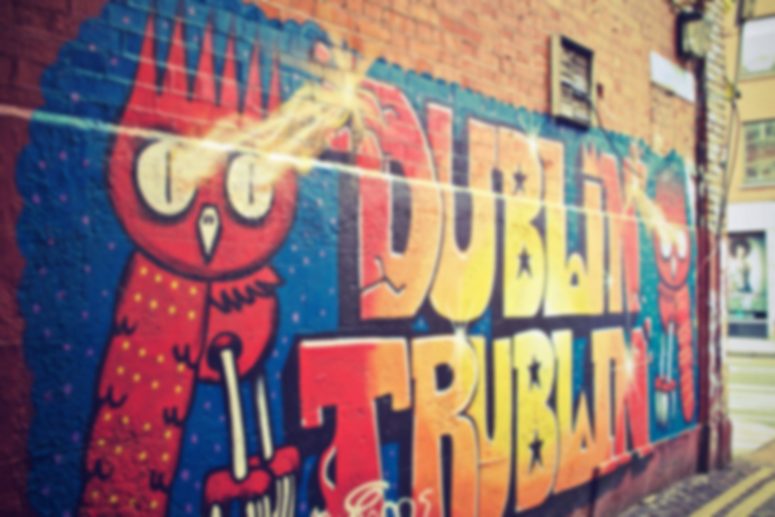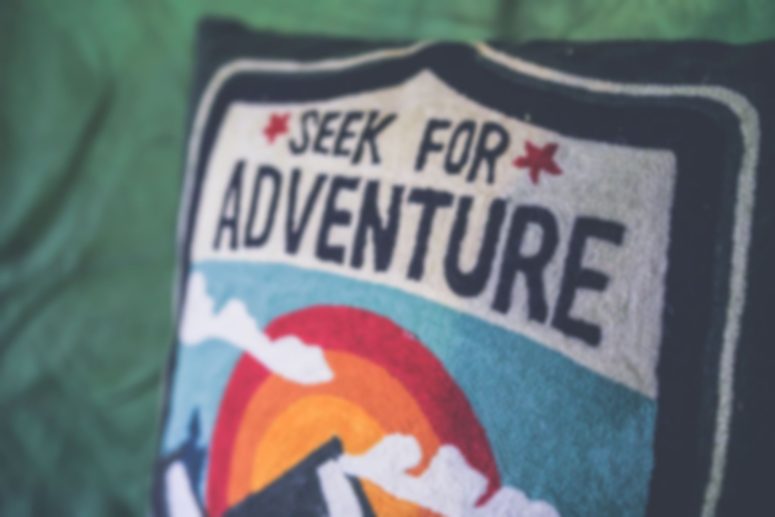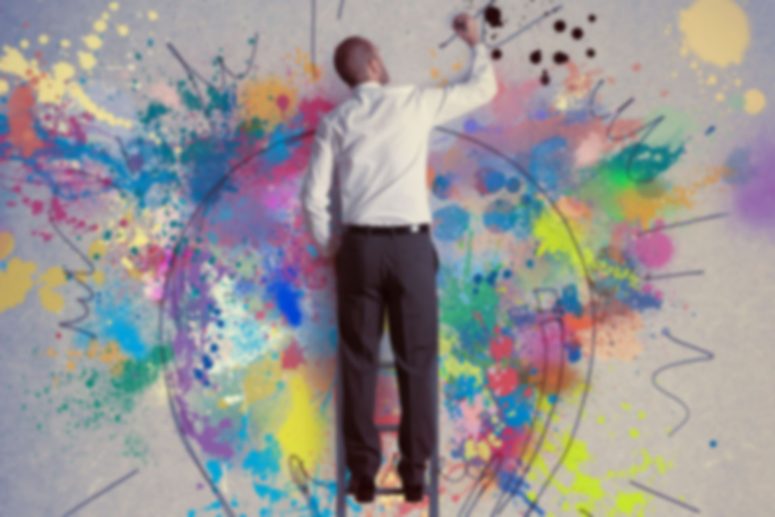 We all swoon at the creative cultures we see in some organizations. They have these crazy interior designs, their employees dress funny (why is it always skinny jeans?), but no one can argue with the fact that they keep coming up with cool new stuff. Some of us love those sorts of organizations. Some of us hate them. Some of us act like we’re in the former group when really we’re in the latter because we’re jealous. (OK, fine, I really want one of those huge twisty slides in my workplace.)
We all swoon at the creative cultures we see in some organizations. They have these crazy interior designs, their employees dress funny (why is it always skinny jeans?), but no one can argue with the fact that they keep coming up with cool new stuff. Some of us love those sorts of organizations. Some of us hate them. Some of us act like we’re in the former group when really we’re in the latter because we’re jealous. (OK, fine, I really want one of those huge twisty slides in my workplace.)
The thing is, I don’t believe those environments happen on accident. In fact, I’m certain they don’t. I have an acquaintance who works at Pixar and it’s crazy how intentional they are with creating environments that are conducive to people being creative. That’s actually this person’s job. Not making the films, but creating the spaces within which other creative folks will create other stuff. Fascinating.
Today and tomorrow we’re going to look at this a little closer. Today we’ll look at the individual level. What sorts of things should we be engaging in ourselves, encouraging in others, and ultimately making sure our organizations are facilitating as well?
1. Curiosity
 Unless you’re a cat, there’s no need to be afraid of curiosity. I like to think that curiosity is what gives birth to creativity. We’re first curious about something, and it’s that curiosity that drives us to create. I’m trying to think of inventors who created something without first being curious about something, but I’m coming up empty.
Unless you’re a cat, there’s no need to be afraid of curiosity. I like to think that curiosity is what gives birth to creativity. We’re first curious about something, and it’s that curiosity that drives us to create. I’m trying to think of inventors who created something without first being curious about something, but I’m coming up empty.
2. Imagination
There was a study done recently wherein jazz musicians’ brains were monitored while they were improvising during gigs. Long, boring, tedious, academic story short — these musicians’ brains had essentially learned to “turn off” that little thing in there that tells you that this or that won’t work or might fail. So without that stopping them, their imagination thrived, unfettered, and you’ve heard the amazing results.
Same is true in our corporate environments. I’ll go into this a bit more tomorrow, but there are so many things in our various organizations that make it irritatingly difficult for people to even have time to be curious, let alone imagine anything.
3. Knowledge
Wait a second, you’re thinking. If it’s creativity, why would you need knowledge? Isn’t creativity by definition something totally new?
It’s a fair question, but let me explain why I say knowledge is part of it. What you know about a given subject or topic or thing gives your mind some sort of framework within which it can work. It provides it the tools it needs to think differently about things. If someone asked me to think creatively about astrophysics, I’d be screwed. Now if they asked me to think creatively about organizational culture, then I’d have a fighting chance. Make sense?
Most of the time, you’ve got to want to be creative to be creative. You’ve got to work at being creative to be creative. I don’t feel that I’m terribly creative. Odd? Sure. Unique? Yeah, just like the rest of you (see what I did there?).
But every once in a while someone will walk into my office, look around at the walls and ask how I came up with some of the ideas. Or we’ll be in a meeting and something will click for me as I’m scribbling in my little black notebook like a weirdo. (See #4 in this post)
What most people don’t know — and yes, I realize this takes my nerdiness to an entirely new and embarrassing level — is that I actually work on it. Yes, my now former readers, I actually practice. I think people think you’ve either got it or you don’t, and I guess in some ways they’re correct in that some folks are naturally a bit more inclined in that direction; but I think everyone’s creative in their own way.
So a while back I started doing things to challenge myself to be creative. Sometimes they were business-related. Other times they weren’t. And now I have an arsenal of things that I do on a regular basis to stretch my mind. It’s almost like trying to make creative thinking a habit, for lack of a better word. But what it does is it makes me apply those thinking habits to the majority of the business conversations I’m in as well.
5. Community
This one will transition us nicely into tomorrow’s post, but I think it’s important to note here as well. Creativity doesn’t often happen in a vacuum. As Steve Johnson says, chance favors the connected mind. When people are together, talking, laughing, thinking, exploring — they’re going to throw out ideas. But it’s not usually those initial ideas that are the ones that end up being the ideas. Those ideas trigger something in someone else’s mind, and it snowballs. Before long, this group of folks has developed a creative solution that wouldn’t have been possible without the collective.
Blah blah. Who cares? You should. Don’t fall prey to the myth that only some people are creative and you’re not one of the chosen few. You are creative; it’s just a matter of figuring out in what way. So find things you’re curious about and that are interesting to you, use your imagination a little (even when the ideas sound silly), utilize all that knowledge you have locked away in that brain of yours, stay motivated and work at it, and surround yourself with others who are doing the same.
Tomorrow we’ll look at this from the organizational level. In the meantime, what would you add to this list? What helps you be creative?












Outstanding post! I especially like the part about “having to work at being creative to be creative.” A lot of people just expect ideas and creative concepts to just come to them. We have to train ourselves (and our brains) to become inventors and idea-generators!
Thanks, Sean. It’s funny, because every once in a while someone will walk by while I’m doing one of those practice-type things and they’ll (rightfully) look at me like I’m crazy. 🙂
Great post Matt!
I sometimes find that staff who say they are not at all creative can be the most creative in a brainstorming session. Go figure.
People buy into the lie that there’s just this select few on the planet who are creative. It’s just not true.
Could you share some of your partices for stretching your mind? I don’t mind looking crazy. 🙂
Well that’s good, because you will. 🙂
I do a few different things.
One is where I take two things that wouldn’t normally go together and figure out how to make them go together or fit together or work together or something. That’s how I ended up with 2x4s put together in the shape of a triangle on my wall holding all my books in a haphazard pile. 🙂
Another is where I force myself to make something. It could be anything. Could be simple. Could be complex. But take ordinary stuff and make something out of it. And then take those same things and make *something else*.
I don’t especially enjoy reading poetry, but I find it a good exercise in creativity for me. So I do haiku, couplets, basic verse, blank verse, free verse, etc. I just pick something and write about it.
Another (aren’t you sorry you asked now?) is I take a problem or situation or project and remove a key piece that I need to fix or complete it and force myself to figure out a different way to do it.
There are a couple others, but they’re even weirder…
Thank you…and no, I am not sorry I asked! The more ideas I hear the more are sparked in my mind.
I love the ideas you shared and I realize I must already be weird because I didn’t think those were that weird.
Thanks again, I love reading your posts and am continually inspired and share them regularly.
Well then I may have some bad news for you, Cindy. You may very well be what you suspected: weird. 🙂 Thanks for the kind words and sharing the mojo….
I’m sorry to be “that guy”, but candidly there is nothing earth-shattering here. Although despite that, it unfortunately does not happen in the office too often. Organizations have taken many of these things away from their employees over the years. While they call it “structure”, I like to call it “hinderance”. There is a fine line between having organization, or structure, and limiting your employees mentally. You read about companies like Google who have all the little gimmicks to make their employees “happy”, but what people don’t seem to understand is that those things also bring out creativity because they encourage things like socializing, which in turn fulfills that quest for knowledge by answering the curiosity that their employees have about other groups and departments. If you haven’t noticed, Google has also managed to create some of the most technically advanced applications, utilities and services this we have seen to date. Don’t get me wrong, they have a rather large number of geniuses working for them, but even the lower-end employees tend to be happy contributors because of the environment that they promote. Meanwhile, you go to the GE’s of the world and find “ultimate structure”. In fact, the company is so structured that instead of promoting thought and input, they tend to brainwash their employees through “internal programs” or classes that yield “certified” . I’m not saying one or the other is right, I’m just saying that personally I think these more traditional companies should focus on adhering to the times instead of forcing so-called knowledge down their employee’s throats. These types of programs are like throwing blinders on a horse… and instead of finding creativity in your employee, you end up with a zombie who has been told the way things should be. It has worked for GE historically, but seems to me that those tables are turning in favor of the Google’s of the world. The one thing that I find many companies fail to recognize, is the importance of everyone in the company. They rest their laurel’s on the top-end of the company, when we all know that the individuals at the bottom are the ones who are making these things happen. Don’t get me wrong, you need a vision and that vision tends to come from the top, I’m just saying that having a vision and executing it are two different things… and if you ask me, the ones who make it happen are the ones who deserve the big rewards (especially these days when you see executive’s bringing a company down to it’s knees and they end up walking away with million’s instead of being held responsible for their horrendous, and often pathetic, actions). Think of it this way… you may have sat in your couch one night saying, “wouldn’t it be great if you could stream videos off the internet” 10 or 15 years ago. That would mean you had a vision. However, today you’re probably just saying, “I had the idea for Netflix years before they came to be!”. Do you deserve Netflix stock options, benefits, and millions in bonuses simply because you had the idea? I didn’t think so…
Anyhow, I do agree that these are important traits that every company should have. I also realize that it’s not common sense among the corporate world. In fact, often times it’s looked down upon. Would just be nice to see corporations adopting these policies and taking steps towards promoting these ideas from within.
Well, I don’t believe I made the claim that the post would include anything earth-shattering, nor would I make it now. I mean, earth-shattering? Wow. That’s a pretty high expectation. I feel like you’ll be disappointed with every post of mine then. No planet-shattering happening. 🙂
I find it interesting that more and more organizations are stating they want creativity as an organizational value. Additionally, it is quite interesting when a bureaucratic organization states it; as we all know, those two entities, bureaucracy and creativity mix as well as oil and water. “Thinking out of the box”, is the way that many originations express creativity. In my experience, the only people who can think out of the box are out of the box people.
Tons of red tape does make it tougher. Right with ya. http://themojocompany.com/2013/02/advocating-for-adhocracy/
consistency, doing what I need to do to grow whether I feel like it or not. I practice my instrument everyday, almost! It always leads to creative discoveries, so I would also add trusting that through consistency my creative muse is kep awake.